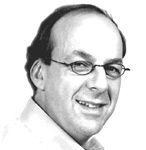PharmExec's 2006 Forecast
Medicare Part D launches. $23 billion worth of patents expire. FDA wrestles with safety issues. Pharma prepares for unprecedented cost cutting and restructuring. 2006 promises to be banner year-if you like roller coasters.
TAKE AN INDUSTRY UNDER constant assault from Congress, the press, and the public. Add one incredibly complex government program that will change the economics of the business in ways that no one yet understands. Subtract $23 billion in revenues from products that go off patent. Stir in regulatory uncertainties, less-than-exciting late-stage pipelines, and a new mood on the part of payers. What do you have? Let's call it 2006 for the pharmaceutical industry.
On the positive side, sales continue to grow, though at a slowing pace. IMS Health projects the global market will grow to between $640 and $650 billion in 2006, an increase of 6 to 7 percent (compared to 7 to 8 percent in 2005). The US market will account for $276 to $279 billion, an increase of 8 to 9 percent.
That growth rate includes two one-time events: the uptake of patients covered by the Medicare prescription drug benefit and recovery of sales lost after the withdrawal of Vioxx (rofecoxib), says Murray Aitkin, senior vice president for corporate strategy at IMS Health. But the top driver of sales will be the uptake of new and recently released drugs—especially the cancer drugs Avastin (bevacizumab), Erbitux (cetuximab), Alimta (pemetrexed), and Tarceva (erlotinib).

Lou Morris on risk/benefit, The whole societal perspective on the benefits of drugs has been lost. It will come back, but when and how fast is an important question. The new first-in-class drug is going to be harder to get through, which is going to make it even more like drilling for oil. Either you hit a gusher or you hit a dry well, and it's one or the other. There are going to be fewer me-too drugs developed. It just doesn't pay.
"The big one is going to be Avastin, which is expected to get new indications for breast cancer and non-small cell lung cancer," says Jason McKinnie, pharmaceutical research analyst for Frost & Sullivan. "That's going to be one of the biggest drugs in 2006. It's really proven that targeted therapy plus chemotherapy is the wave of the future."
About 39 new products are expected to launch, 26 of them targeted at specialists. Among the list: Sanofi-Aventis' Acomplia (rimonabant); Pfizer's inhaled insulin product, Exubera; the insomnia drug indiplon from Neurocrine Biosciences; and Pfizer's cancer drug Sutent (sunitinib). (For more on emerging products, see Pharm Exec's annual Pipeline Report.)
The biggest negative: pharma's worst patent-expiration year ever, with $23 billion worth of products losing protection. The list includes six blockbusters: Zocor (simvastatin), Zoloft (sertraline), Lamisil (terbinafine), Ambien (zolpidem), Pravachol (prevastatin), and Zofran (ondansetron). Generics are already the fastest growing segment of the industry, with an anticipated increase of 18 to 19 percent in 2006. The next few years should fuel their growth.

ELizabeth Browning on the boomers, We see an enormous and growing interest in consumer health educationâÂÂyou can't pick up a magazine that doesn't talk about health. There's a lot of information out there but not much guidance. I think you'll see an increased willingness to pay for health and wellness information. Boomers grew up on brands, they expect quality and service, and they don't hesitate to buy what they consider good.
As IMS sees it, growth this year will be less in primary care and more in specialty, less in traditional pharma and more in biotech, less in branded and more in generics. "Companies need to look strategically at where growth is coming from and how to balance their portfolios to take advantage of it," says Aitkin.
Geographically, China should be the fastest-growing market on a percentage basis, with growth in the 17 to 18 percent range. "All the signs point to the critical need for companies to invest in this country now," says Aitkin. Non-Japan Asia, Latin America and Eastern Europe continue to grow rapidly. And as for Europe, "The only way it starts to look good is that it's looked so bad for the last couple of years," says Todd Clark, president of VOI Consulting. Trends to watch in Europe: The European Agency for the Evaluation of Medicinal Products (EMEA) is ahead of FDA on biogenerics, and some products could reach market by fall. And traditional generics are finally catching on in a big way, especially in southern Europe.
A Cash Infusion
The event of the year will be the launch of the Medicare prescription drug program. The big question: Will seniors sign up? In a recent poll by Harris Interactive and the Wall Street Journal Online, about half of seniors said they were likely to sign up for a prescription drug plan (PDP) by the May deadline. But only 18 percent thought it would make prescription drugs more affordable—and 21 percent thought it would make them less affordable.

Hugo Stephenson on Postmarket Research, Even before Vioxx, there was significant growth in peri- and post-marketing activity. The growth rate in Phase IIIb and IV is 20 percent per year or greater, and various reports have predicted that Phase IIIb and IV research may soon equal Phase I and II. Things that have happened in the last year have only added fuel to that.
"The initial opt-in period will probably have to be extended," says Peter Pitts, senior fellow at the Pacific Research Institute and senior vice president for health affairs at Manning, Selvage & Lee.
To Tony Pinsonault of Pinsonault Associates, that means companies need to use their sales forces to support the program. "They need to educate physicians, so when a doctor writes a drug for a 65-year old-patient, they're not going to be at the pharmacy for five hours trying to get a prior authorization."
Part D promises substantial potential revenue, but it will be unevenly distributed. "Think of it as red states and blue states," says Mason Tenaglia, managing director of the Amundsen Group. "A lot of blue states have had highly developed patient assistance programs for 15 to 20 years. In Connecticut, New Jersey, and Wisconsin, there's not going to be a big uptake for Part D. It already happened." Tenaglia predicts similar variations by clinical area, PDP, and product. "Companies that built their $2 billion dollar brands on marketing muscle are going to be the most vulnerable," he says.
Part D should also increase price transparency, which should put pressures on margins. The big question marks: How much? And how soon?

Bill Trombetta On Marketing, Category captain management is going to become much more important in pharma. It's done in every other industry. In food, autos, telecom, you name it, the supplier is trying to establish a strategic relationship with their clients to add value. This is how companies like IBM and General Electric compete. It is, quite frankly, an alternative to the blockbuster model, and I think it's going to be huge.
Cost Cutting
If pharma has one piece of good luck this year, it's that Part D revenue will help offset some losses from patent expirations. "But it's not going to be a revenue infusion that can perpetuate itself," says Terry Hisey, US managing principal, life sciences and healthcare for Deloitte. "Companies need to aggressively go after enterprise cost reduction this year, because that's the only short-term profit preservation move for them to bring drugs to market to replace the money they're going to lose."
How can companies respond? "We're going to see headcount reductions in the sales force," says Laurence Poli, associate professor of pharmaceutical business at the University of the Sciences in Philadelphia. "We're going to see more focus on licensing and acquisitions, even more than what we see today. That's going to put a strain on profitability."
"Marketing and sales restructuring would be one of my big priorities, and then enterprise-wide cost reduction and all the things that would imply," says Hisey. "The one wrinkle is how do you lower cost and redirect expenditures so that you still get the innovation from the industry?"
For Michael Rosenberg, CEO of Health Decisions, the number one issue is efficiency in clinical research. "There's still an enormous cost to develop a new product, and lots of external pressure to reduce that number. It used to be that pharma companies were the only game in town. They did all the discovery, all the development, all the marketing. Now, new smaller players can compete pretty well against big companies, so we may see a big change in the way clinical development is done."

Micheal Rosenberg on Technology, The post-marketing world is likely to change. As we get more information on how products are used in real-world settings, it will allow us to use a lot of micro-marketing strategies and customization. Technology will provide a more efficient system of sorting through large amounts of relatively simple data to refine marketing strategy, and define who should and who should not be receiving a drug.
Safety First
The effort to restructure will take place in a context of public anxiety over drug safety. Perhaps the most worrying event in the safety saga took place in October, when FDA issued an approvable letter for Bristol-Myers Squibb's Pargluva (muraglitazar), calling for additional cardiac safety studies, and the company announced that it was considering withdrawing the drug from development.
"Here you have the best Type 2 diabetes drug ever produced, efficacy-wise," says Sander Flaum, managing partner of Flaum Partners. "And now it's basically over with, because of the potential—potential—cardiotoxic effects."
"There hasn't been much discussion about balance," says Abbott CEO Miles White. "It's all about risk. You get the impression that the safety hurdle for all drugs is pretty much the same, and it's almost a no-risk hurdle."
"FDA is not even listening to its advisory committees," says Lou Morris, president of Louis A. Morris and Associates. "The committees are telling them that it's OK to approve certain drugs, and FDA is finding ways to ask more questions. The new first-in-class drug is going to be harder to get through, which is going to make it even more like drilling for oil. Either you hit a gusher or you hit a dry well."

Raising the bar: 2006 sales
But not everyone is persuaded that FDA will move further in the direction of overbalancing in favor of safety. "I think the pendulum is swinging back toward the middle," says Peter Pitts. "The FDA advisory committees and people at FDA are not buying into the dreaded precautionary principle, which says that unless you know everything you shouldn't do anything."
Who's in Charge?
The safety issue is complicated by the fact that FDA remains under a cloud of suspicion. The agency must address important issues in the months ahead, including several significant drug approvals (for example, Acomplia, which promises to be the most-watched launch of the year). FDA's Critical Path initiative, which aims to accelerate drug development, looks increasingly important, but it might prove politically sensitive because it has the agency cooperating with industry. And, of course, FDA again finds itself headed by an acting commissioner, Andrew von Eschenbach.
"He's a very qualified guy, and a three-time cancer survivor who feels that every day he's alive is a day to make a difference," says Pitts. But it's hard to see any candidate surviving the approval process today. "Given the weakness Bush has, he can't get anyone appointed now," says Flaum.
Who's at FDA's helm may not be the most important issue, though. "The agency doesn't dramatically alter depending on who's sitting in the chair," says Miles White. "But I am concerned that some members of Congress are exerting way too much influence over the agency and compromising its independence."

Richard Nordstrom On Asia, In the United States, we're very computer based. In Europe, it's computer and handheld devices. In Asia, it's all handheld-no one can afford computers. When you hear what Microsoft and Intel are going to drive market change, it's the same kind of leapfrog. It's such an interesting dynamic, and it will affect the way we relate to physicians: You expect Asia to be in the old days, but it's in the new days.
Compliance
Even if FDA is distracted, the industry will have more than enough regulatory concerns to go around. The Office of the Inspector General (OIG), with the launch of Medicare Part D, will have oversight of a vastly expanded roster of drugs. State regulation, especially caps on aggregate promotional spend and various reporting requirements, will continue to increase in importance. And Europe is starting to more aggressively pursue healthcare fraud investigations like OIG's.
For the moment, says Andy Bender, president of Polaris Management Partners, top concerns will include:
Off-label promotion "We haven't seen the end of it," says Bender. "I don't think we're even seeing the peak yet."
Publications and clinical trials "OIG will be looking at proper disclosure on independent investigator studies," Bender says, "how they're being conducted, who wrote the conclusions, et cetera."
Training Bender's colleague Judith Braun-Davis, compliance specialist at Polaris, explains: "The last couple of years, everybody has been doing policy and process. Now it's implementation time."
Bender predicts that new compliance initiatives will drive major changes in sales and marketing. "Companies are being requested to report how much they spend on physicians," he says, "and that forces companies to start tracking how much they're spending. That's a major eye opener for senior management."
Braun-Davis, for her part, is closely watching the regulatory climate in Europe. The United Kingdom, for instance is looking at revising its regulatory authority, the Medicines and Healthcare Products Regulatory Agency (MHRA), its FDA-equivalent. "They're going to be creating a communications department, and they're looking for more enforcement from them in certain areas," she says.
Potentially more significant is a new move to aggressively combat healthcare fraud in Europe, earmarked by the newly formed European Healthcare Fraud & Corruption Network. "They're going to have a 10-person staff based in Brussels," says Braun, "and they're going to be sharing best practices among countries."
Marketing and Advertising
To the public, DTC advertising is the burning issue in the sales and marketing area. And the industry is hoping that the new voluntary PhRMA DTC Code will be enough to satisfy Congress. "There are some among the CEOs of pharma companies that sit on the PhRMA board that think it could have gone further," says Miles White, "and others who think it went plenty far enough. At the end of the day, it will depend on how we behave as an industry. I'm optimistic."

Mason Tenaglia On Part D, In 2006, whenever anyone doesn't make their number, they're going to say, "It's Part D, we got more dual eligibles than we thought." There's always going to be an explanation, and it's going to be about Medicare Part D. It's going to happen at the earnings presentations; it's going to happen at all the sales reviews; it's going to happen at the brand reviews. It could be the El Niño of 2006.
But the Senate Finance Committee, chaired by Senator Chuck Grassley (R-IA), is still poking actively into the pharmaceutical industry—most recently into conflicts of interest in the clinical trials area. The second shoe has yet to drop on Grassley's inquiry into marketing. "The question is what will the committee be doing?" says Bruce Bellande, executive director of the Alliance for CME. "Will they be satisfied that things have improved and will continue to improve? Will they schedule hearings? Will they decide there's enough there that they would want to craft legislation?"
For the moment, at least, it looks like FDA will do little on DTC beyond issuing a rising number of Notices of Violation. What should it be doing? "Trying to address the question of what does DTC advertising want to be when it grows up. Any company that does reminder ads in 2006 will be crucified and bring everybody else down with them."
It is clear that DTC has to evolve. "I think our DTC will be more DTP [direct-to-patient]," says Richard Nordstrom, CEO of McCann Healthcare Worldwide. "We will focus more on the interaction between patient and physician, because there's a huge gap there. We also need to build the CRM relationship with the patient. Clients are asking us to develop programs in tiny markets with high value per patient, where it's imperative to talk to patients one on one. Not next year, but we will see DTC, CRM, and professional marketing get much closer together."
The real issue, says Bill Trombetta, professor of pharma marketing and strategy at St. Joseph's University, cuts deeper: "How do you establish the relationship between rep and physician when quite frankly, the physician didn't want to see the rep even when the reps were schmoozing them?"
One hopeful development, says Hugo Stephenson, president of strategic research services at Quintiles, is that the alignment of research and marketing that many in pharma have been advocating for years is finaly taking shape. "Whereas four or five years ago, there was quite a gulf, today there's communication and understanding of strategy. We're seeing better research, research that's more aligned with commercial strategy, and more of it."
You Pay Your Money . . .
On the payer side, there are two intersecting trends, says Michael Russo, partner in the consulting firm the Bruckner Group. One is the effort to dig deeper into the economics, and the other is the move toward so-called "consumer-driven" healthcare. Payers have spent the past five years building infrastructure, putting people and programs in place, and getting out social and political messaging, says Russo.
"Now, they're in a position to make demands on individual policyholders as well as providers and pharma companies. They're looking to reduce utilization and per-use costs. By 2007, the vast majority of the larger companies will have all of that in place. Specifically, for better or worse, they're cracking down on expensive injectables to treat rare chronic diseases."
Meanwhile, a growing number of employers are trying to shed healthcare costs by moving employees to low-premium, high-deductible, consumer-driven plans. Russo is not optimistic. "It undermines what insurance is in the United States. It's a direction that could cause potential disaster if not checked the right way."
Harris Poll's chairman, Humphrey Taylor, agrees: "We are seeing a very rapid growth in high-deductible plans. But the rosy view advocates have painted of people making more rational decisions are unlikely to work out, and the main consequence will be that sicker, poorer people will be much less compliant."
Again, consumer education is a key factor. "I can't think of any other industry where the consumer has been less prepared to take on the purchasing responsibility," says Elizabeth Browning, CEO of the health education firm Lluminari.
Structural Change
Much of the focus in 2006 will be dealing with a collection of short-term problems. But the fact is that major structural issues remain. "The greatest challenge for the industry today is that these companies are neither growth companies nor defensive companies," says Deutsche Bank analyst Barbara Ryan. "The market sort of had it right: You can see Merck getting cut in half, but there's no shot for Merck to double. You could buy a biotech, and maybe the stock will get cut in half, but if their drug works, it could be a three bagger. The drug industry today characterizes the worst of both worlds."
In the middle run, Albert Wertheimer, director of the Center for Pharmaceutical Health Services Research at Temple University, sees massive reorganization. "US companies will turn into marketing organizations that outsource not only manufacturing, but also clinical trials and drug discovery," he says. "I think labs will move to India and China, where they have lots of inexpensive, skilled people. Next, I see the Indian companies in particular saying, 'Why are we satisfied with 7 percent royalties? Why don't we come into the States and take the whole pie?'"
In the meantime, says Ryan, mergers are in the offing, possibly starting in 2006. "BMS has a poison pill in the Plavix litigation because no one knows if Plavix stays or goes. Once the litigation is decided, BMS would likely be taken over, maybe by Glaxo. Merck could merge with Schering-Plough. Novartis and Wyeth. There are lots of combinations."
THE PhRMA VIEW
I'm telling my colleagues at PhRMA to enjoy the holiday in December because when the new year begins, they're going to be busy.

Billy Tauzin
Not long ago, the Partnership for Patient Assistance (PPA) matched its millionth patient with an assistance program providing free or nearly free medication. But millions of uninsured Americans still need help, and PPA is in for the long haul.
We will also continue to educate patients and healthcare professionals about the role of direct-to-consumer advertising in patient education and about industry efforts to enhance the value of ads.
In Congress, we will work with lawmakers to promote access to safe, affordable medicines. We will continue to oppose legislation, such as risky importation bills, that threaten the safety of consumers and impede access to needed medicines.
We are watching developments in the states, as governors and legislatures grapple with how to balance their budgets and still provide quality healthcare, education, and other important services. Unfortunately, some states focus too narrowly on cuts in prescription drug spending, which in Medicaid will account for only 3 percent of total program costs after many patients start receiving drug coverage under Part D of Medicare. Limiting Medicaid patients' access to medicines hurts America's poorest and most vulnerable citizens—and in the long run, may drive healthcare expenses up, as patients are deprived of medicines they need to lead productive, healthy lives.
On the international stage, we will address healthcare reform in Japan, continuing cost containment pressure in Europe, and a serious lack of understanding in such nations as China, India, and Brazil about the value of intellectual property patents in local economic development and in helping tens of millions of patients receive medicines they desperately need.
On the regulatory front, PhRMA is concerned that patients might not receive the newest medicines in a timely manner if FDA does not maintain a balanced focus on benefits and risks. The agency has the world's best drug safety record, with fewer than 3 percent of medicines having been withdrawn from the market for safety reasons over the last 20 years.
We will leave no stone unturned in our effort to ensure that our companies have the environment necessary to continue developing new medicines that help people around the world by saving lives.

Addressing Disparities in Psoriasis Trials: Takeda's Strategies for Inclusivity in Clinical Research
April 14th 2025LaShell Robinson, Head of Global Feasibility and Trial Equity at Takeda, speaks about the company's strategies to engage patients in underrepresented populations in its phase III psoriasis trials.
Beyond the Prescription: Pharma's Role in Digital Health Conversations
April 1st 2025Join us for an insightful conversation with Jennifer Harakal, Head of Regulatory Affairs at Canopy Life Sciences, as we unpack the evolving intersection of social media and healthcare decisions. Discover how pharmaceutical companies can navigate regulatory challenges while meaningfully engaging with consumers in digital spaces. Jennifer shares expert strategies for responsible marketing, working with influencers, and creating educational content that bridges the gap between patients and healthcare providers. A must-listen for pharma marketers looking to build trust and compliance in today's social media landscape.